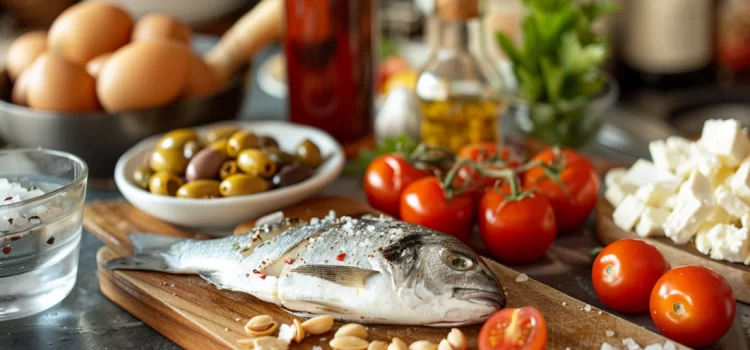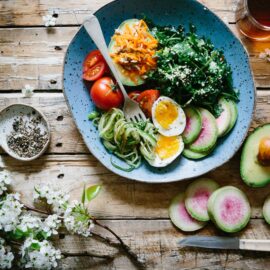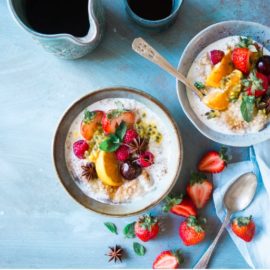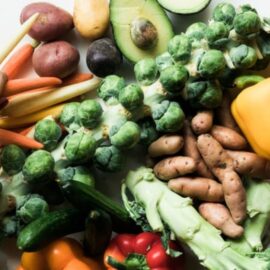
Wondering what to eat on a Mediterranean Diet? What types of ingredients should you try to incorporate into your meals?
The Mediterranean Diet is more about eating fresh, whole foods than being on a strict meal plan. This includes swapping out red meats for fish, replacing sugary snacks for fruits, and adding farm fresh veggies to your meals.
Here are some examples of foods to eat on a Mediterranean Diet.
Embracing the Mediterranean Lifestyle
You can embrace a way of life similar to what is typical in the Mediterranean region by following the comprehensive guide provided by the book The Mediterranean Diet for Beginners. The book includes a collection of recipes and a detailed seven-day meal plan that align with the dietary habits of the Mediterranean region. But here, we’re going to talk about the most important ingredients to incorporate. Here’s what to eat on a Mediterranean Diet.
(Shortform note: The Mediterranean diet is sometimes criticized for not being specific enough, as it encompasses a wide range of eating practices across different countries and cultures within the Mediterranean region.)
Wholesome Breakfast Options
Start your day with a range of delicious and nutritious breakfast options that are consistent with the essential elements of a Mediterranean diet. Try blending succulent fruits and milk with a hint of smooth, low-fat Greek yogurt to create an energizing and wholesome Berry and Peach Sunrise Smoothie. If you prefer savory dishes, the Mediterranean Omelet combines the nutritious flavor of eggs with the fresh crunch of vegetables such as bell peppers, onions, and cherry tomatoes. For a luxurious yet harmonious choice, indulge in a dish of Benedict featuring a mixture of egg, Italian bacon, and leafy greens, accompanied by a selection of ripe, mixed berries.
Nourishing Meals With Fresh Ingredients
The nutritional plan focuses on consuming a variety of grains and proteins, particularly fish, and is heavily inspired by the eating habits prevalent in Mediterranean regions. Vegetable consumption is strongly recommended, and you’ll find an array of salads that mix proteins with leafy greens, such as spinach with strips of flank steak. Enjoy a robust selection of meals, including a nourishing and satisfying oven-roasted blend of vegetables, served alongside delectable Pesto-Glazed Chicken Breasts, and an assortment of seafood choices, like oven-baked Cod and Mussels cooked in a White Wine sauce.
(Shortform note: Some critics argue that the Mediterranean diet can be high in sodium, particularly from foods like olives, capers, and certain cheeses, which could be a concern for individuals with hypertension.)
Flavorful Pasta and Rice Dishes
Indulge in robust grain dishes that contribute to a delightful and richly flavored Mediterranean culinary adventure. The menu often features an array of pasta dishes complemented by juicy tomatoes, such as penne tossed with a selection of oven-roasted vegetables or fettuccine entwined with the lively taste of fresh tomatoes and herbs.
Satisfying Snacks and Treats
While the Mediterranean eating pattern focuses on the intake of whole, unprocessed foods, it also permits occasional treats. Incorporate a variety of whole, unrefined foods into your diet for satisfying snacks, like combining kale with ingredients such as apples and a selection of seasoned nuts in a crunchy salad. When you’re in the mood for something sweet, enjoy delicious and nutritious treats like pears drizzled with a red wine reduction or fruit-based delights such as granita.
By following these guidelines and incorporating the recipes and meal plans provided, you’ll be well on your way to embracing the healthy and flavorful Mediterranean lifestyle.






